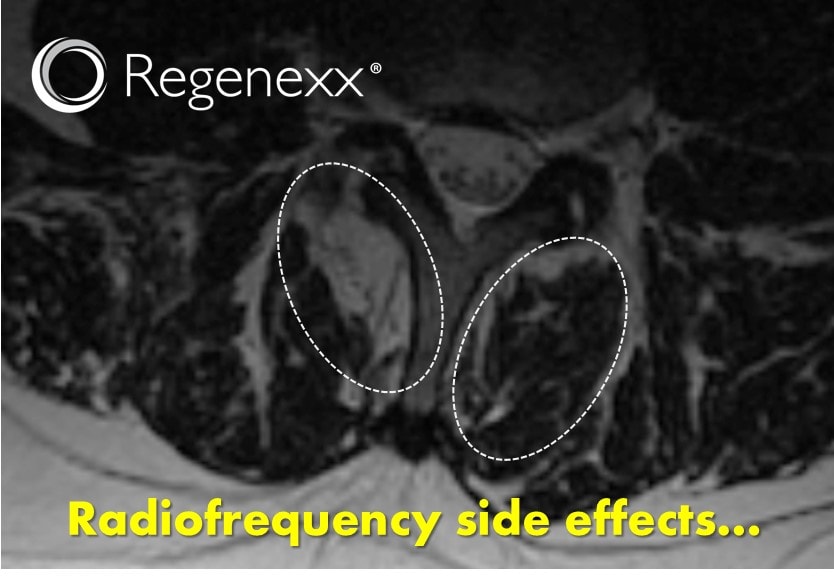Rhizotomy Side Effects: Killing Off Important Stabilizers
Radiofrequency ablation or RFA (also known as rhizotomy) has become a mainstay of low back pain treatment in the U.S. and elsewhere. However, what if the list of rhizotomy side effects held a secret that most patients never knew about nor were informed of as a possibility. What if everyone who got a successful RFA had this serious side effect and that will likely make them worse off in the long-run? Would as many patients sign up for this common procedure? Let me explain.
RFA or rhizotomy involves precisely placing a specialized needle near the nerve that takes pain signals from a painful low back facet joint. These joints can become painful when the patient’s low back discs begin to loose height and more wear and tear is experienced by these joints or when these joints are injured. The procedure works by the tip of the needle heating up, which literally burns the little nerve away (ablates or destroys it). While one function of the nerve is to take pain signals from the joint to the brain, another is to supply the important stabilizing muscles of the back known as multifidus. These little muscles are critical for normal back function, as they control the movement of one vertebra on another. When the nerve is ablated, these muscles suffer. How much can they get damaged by killing their nerve? The image above tells the story.
This image is from a patient we treated in Grand Cayman patient where we use our advanced cultured stem cell procedure at our our licensed site there). He’s had several RFAs on the right (left side of the picture above). The white dashed circles are around the multifidus compartment. The dark color is muscle, the white color is fat atrophy (meaning dead muscle). Notice how the circle on the left of the picture (right on the patient) is filled largely with white, which is muscle that has been killed off by the RFA. Compare this to the other side without the RFA which is still alive and dark. So while RFA took his pain away for 6-12 months at a time, it also set his back up to be unstable and unprotected. Will these muscles grow back? Unlikely in my experience.
The upshot? RFA is a destructive procedure that we AVOID in our practice. It’s the opposite of a regenerative medicine procedure. Today, given how well platelet rich plasma or stem cells work in these small joints, there’s simply no reason to destroy nerves in a patient’s low back. Hopefully, this is the beginning of the end of this procedure and the next generation of doctors will look back in horror and say, “What were they thinking?”

NOTE: This blog post provides general information to help the reader better understand regenerative medicine, musculoskeletal health, and related subjects. All content provided in this blog, website, or any linked materials, including text, graphics, images, patient profiles, outcomes, and information, are not intended and should not be considered or used as a substitute for medical advice, diagnosis, or treatment. Please always consult with a professional and certified healthcare provider to discuss if a treatment is right for you.

